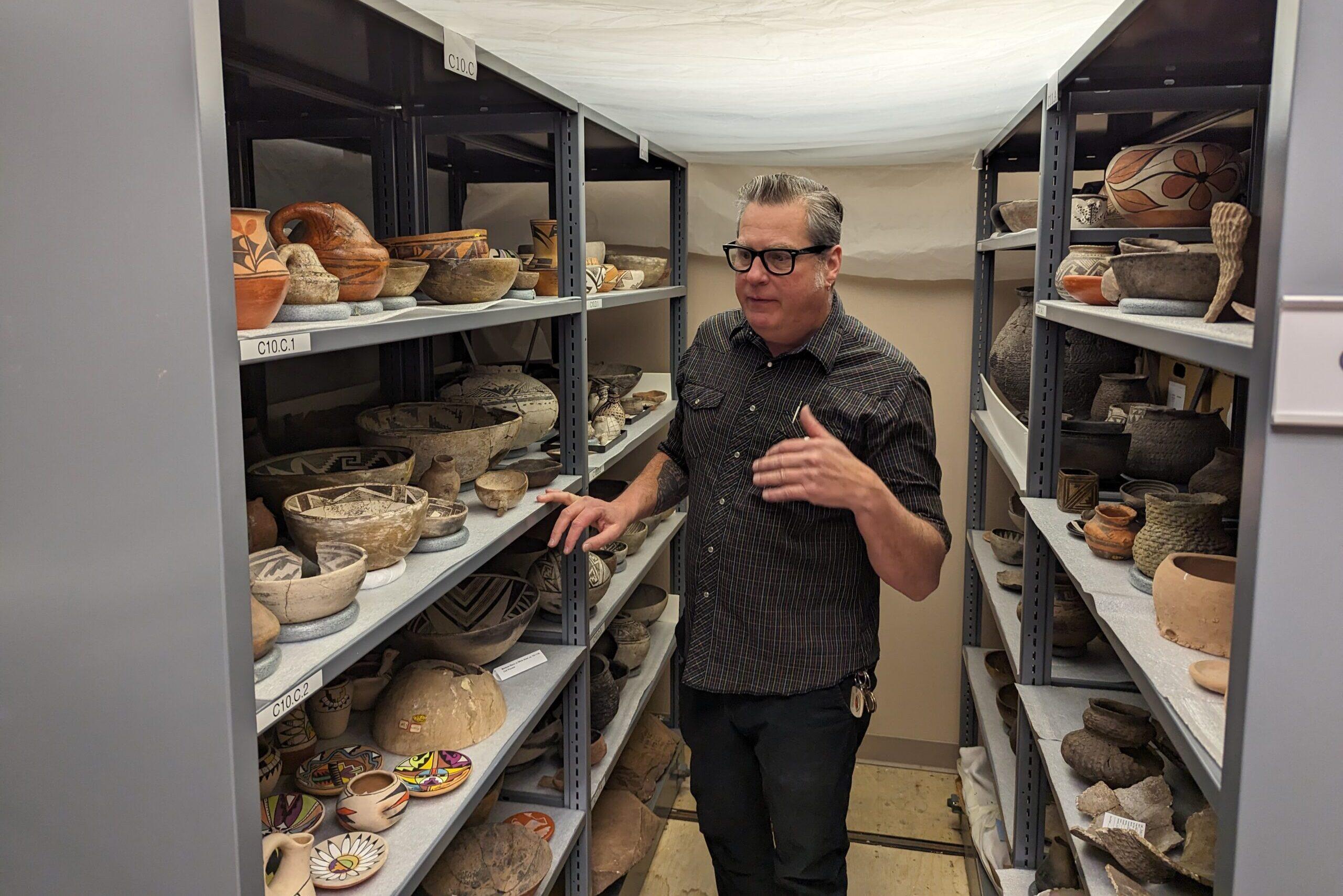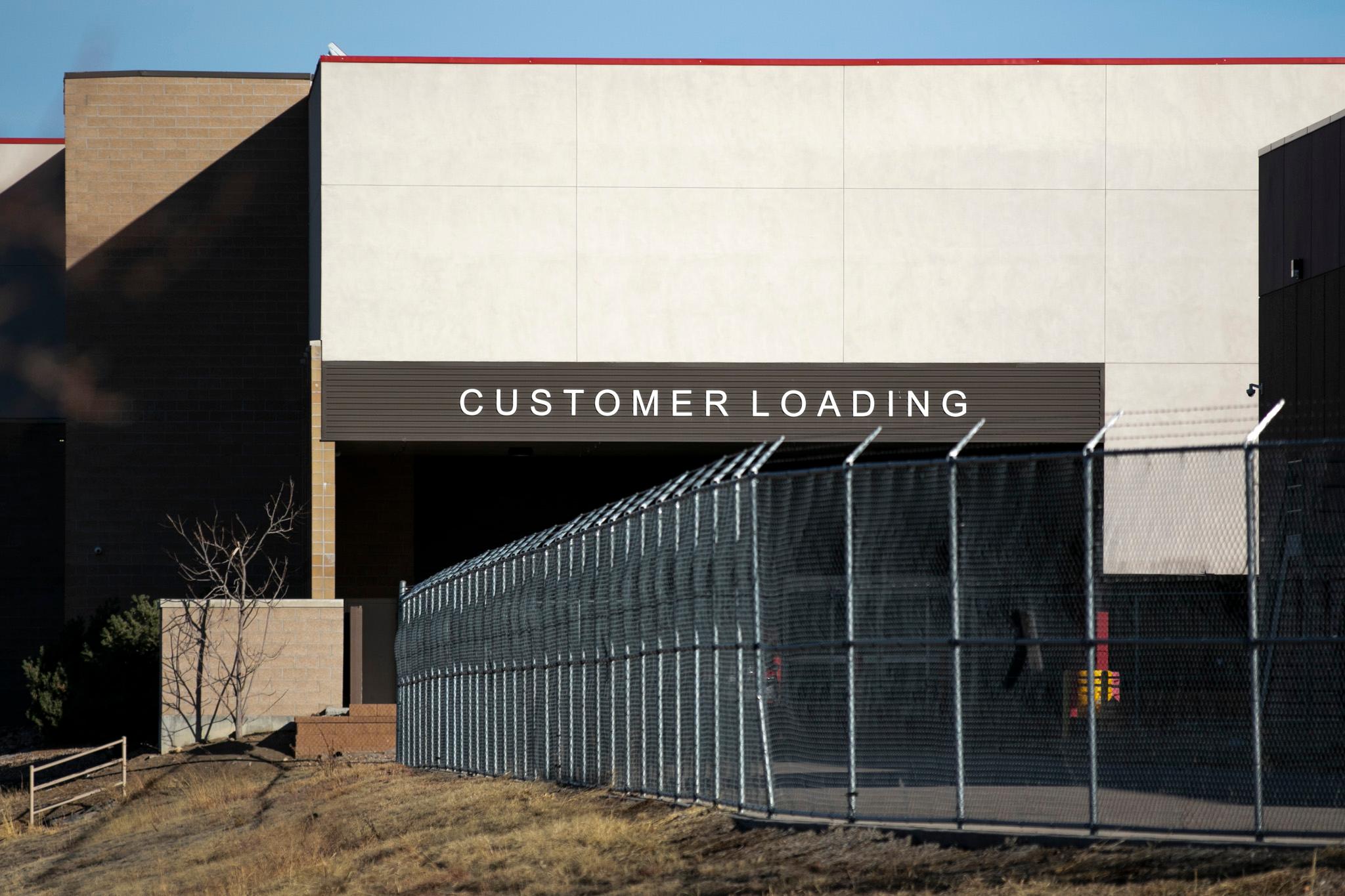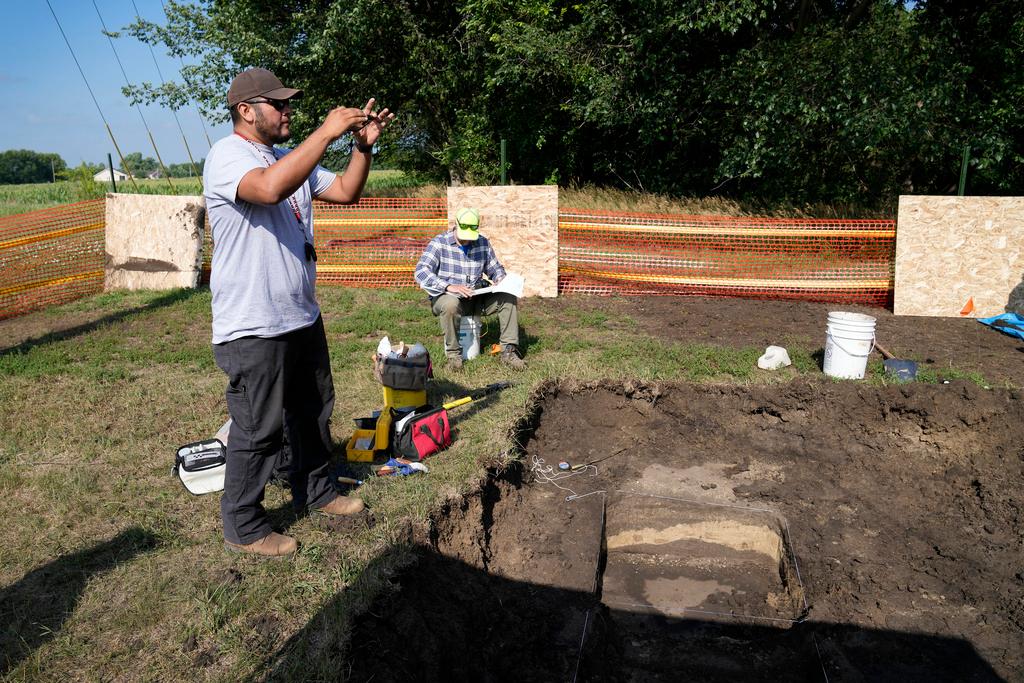
The plundered remains of 25 individuals taken from lands in Southwest Colorado a century ago may be returning home thanks to a renewed effort at Western Colorado University in Gunnison.
For decades, “The Peterson Collection,” as it’s been called, has been shuffled around the campus, now residing in the CT Hurst Museum. The remains are subject to the Native American Graves Protection and Repatriation Act (NAGPRA), a federal law requiring human remains and artifacts of cultural significance to be returned to Native Tribes.
Leslie Taylor, vice president for marketing and enrollment at Western Colorado University, said the presence of the remains speaks to a grim period of American archaeology and research.
“We respect the ways that different cultures and religions treat the funerary process, the burial process, and we protect the graves of people very seriously. When we hear about graves being vandalized or cemeteries being treated improperly, we take that very seriously,” Taylor, a member of the Cherokee Nation, said. “And yet these folks were looted from their final resting place. And I just feel like if we can get them back to a place where they will be loved, cared for, and respected, we'll be meeting that fundamental human right.”
The process of returning the remains is in its infancy. Because of how they were ransacked and how they came to the museum, it’s impossible to know for certain which Tribe they might belong to. Staff recently completed a new inventory of the collection and contacted Tribes to gauge interest in taking custody of the individuals, who are estimated to be around 1,000 years old. But this latest effort also highlights some of the challenges of the first attempt made to return the collection, which nearly succeeded 30 years ago.
“I had everything packed up and I had a car ready,” recalled Mark Stiger, professor of archaeology. “I was getting ready to load and take off that day and got the call saying, ‘Hold on, this is not going to fly with the feds.’”
The Collection
Stiger first encountered the remains when he joined Western, which was known as Western State College of Colorado back then. He arrived just ahead of the introduction of NAGPRA. Stiger remembers coming across the remains while trying to reconstitute the CT Hurst Museum. Hurst, who was not affiliated with the looted remains, was one of the founders of the Colorado Archaeological Society. When he died his collection, along with problematic remains, were set aside.
“I think when we first found them, they were in the boiler room of Quigley Hall, which is high humidity, high temperature, and exactly the place these things shouldn't have been,” Stiger said. “I didn't even know the Peterson collection was in there and we found it. Different materials were in cardboard boxes wrapped in newspaper. And in fact, one of the newspapers was ‘Hitler's body still not found.’ Nobody had even unwrapped them.”
David Hyde, a senior lecturer of anthropology at Western, is leading the current effort to repatriate the remains. He said there’s little known about Peterson.
“Sometime in the ‘40s, I believe it was, it might have been a little bit later, but this guy Peterson died. He was a person who was looting artifacts down in the Durango area, and he did a lot of this. And he wasn't an archeologist, he's just looting, he dies,” Hyde said.
Peterson’s brother, a graduate of Western, came across the remains while handling the estate. Unsure what to do with them, he donated them to the college. The remains reflect a long-discredited period of research obsessed with cranium size. As such, the man who looted the remains only took skulls. Hyde calls him a “head hunter.”
The remains have long since been moved out of the boiler room and have been in storage for years. Taylor said she viewed the remains as the latest process for repatriation was beginning.
“I met with (David) Hyde and we had a wonderful talk and I said, ‘OK, so I want to know where they are. I want to know they're safe.’ So I have seen it and it was breathtaking and emotional,” she said. “I don't know what I was expecting, but when you see someone's ancestors in a metal cabinet, on a metal drawer. Labeled. It's just hard to describe what that feels like.”
The remains, which Hyde said offer no research value because of how they were looted, aren’t open for public display. Hyde explained that, with a few notorious exceptions, the practice of displaying human remains in museums has been abandoned. Taylor said that’s part of the reason she made an effort to view them.
“It did help me to realize that they are in a safe place. It's very secure. I feel like it is as respectful as it probably can be while being in a museum,” Taylor said. “They're not on display. People can't see them. They're not used for teaching and instruction.”
Return Efforts
Stiger’s first attempt to return the collection to Tribal custody in the 1990s was thwarted by a phone call from the state archaeologist. Stiger, through his contacts with the Southern Ute Tribe, had arranged for them to take possession of the remains.
While it’s not known who the remains truly belong to, the area they were taken from was in the region of Southern Ute land. Stiger said the initial plan some 30 years ago failed at the last minute when he was told the return would not square with federal policy under the newly passed, and little-understood NAGPRA guidelines.
“I really hated to have to call up the Southern Utes and tell them, ‘OK, I know we were going to do this, but now I'm not going to,’” Stiger said. “And of course, that just feeds the pattern of lies, and it wasn't on purpose, but didn't make us look good.”
From there the efforts stalled, Hyde said, until he picked it back up. A grad student in the program completed a new inventory of the remains, discovering some inconsistencies from the original one, and Western received an $81,000 grant to help fund repatriation.
The process included sending 68 letters to Tribes, which generated responses from the Pueblo of Zia, the Navajo, the Hopi, and the Southern Ute. The grant money will pay for Hyde to consult with the Tribes, a first step in returning the remains.
“We will go to them and talk to them there and ask them what it is that they need from us in addition to obviously looking at the material, the collection, the pots, and all these sorts of things, the individuals,” Hyde said, explaining that they’ll also seek input to make sure they’re handling the collection properly in the interim.
Hyde said it’s common for Tribes to defer to others in cases where the origin of the remains is unclear. NAGPRA remains a complex policy and not all institutions or Tribes are staffed up to handle repatriations. It’s difficult to say how long it will take to complete the effort, but Taylor said she’s encouraged by the work going into the process, adding it’s important to recognize and address the callousness that Indigenous remains were treated with.
“Seeing any individual in a museum or lab, ours included, no matter how respectful or secure the manner of storage is, it's just not dignified,” Taylor said. “It is absolutely a matter of dignity and respect when you think about those ancestors being stored in a drawer or a cabinet or a box at a university or museum.”
- For the first time, Colorado details dark historical chapter of attempted forced assimilation of Indigenous children in extensive report
- New state report on Indigenous boarding schools uncovers more dark history for Fort Lewis College. Leaders are doubling down on reconciliation
- A year into its investigation into Indian boarding schools, History Colorado begins to lay out steps toward reconciliation
- Artifacts And Human Remains Collected Years Ago To Be Returned To Tribes









